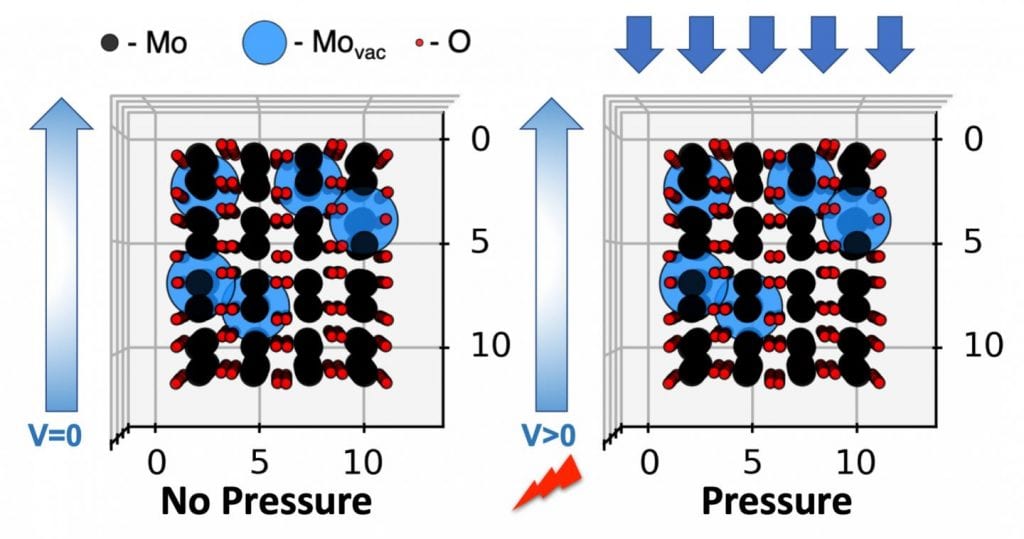Rice University researchers have found evidence of piezoelectricity in lab-grown, two-dimensional flakes of molybdenum dioxide.
Their investigation showed the surprise electrical properties are due to electrons trapped in defects throughout the material, which is less than 10 nanometers thick. They characterize these charges as electrets, which appear in some insulating materials and generate internal and external electric fields.

Piezoelectricity is likewise a property of materials that respond to stress by generating an electric voltage across their surfaces or generate mechanical strain in response to an applied electric field. It has many practical and scientific uses, from the conversion of a wiggling guitar string into an electrical signal to scanning microscopes like those used to make the new finding.
The researchers at Rice’s Brown School of Engineering found their micron-scale flakes exhibit a piezoelectric response that is as strong as that observed in such conventional 2D piezoelectric materials as molybdenum disulfide. The report by Rice materials scientist Pulickel Ajayan and collaborators appears in Advanced Materials.
The key appears to be defects that make molybdenum dioxide’s crystal lattice imperfect. When strained, the dipoles of electrons trapped in these defects seem to align, as with other piezoelectric materials, creating an electric field leading to the observed effect.
“Super thin, 2D crystals continue to show surprises, as in our study,” Ajayan said. “Defect engineering is a key to engineer properties of such materials but is often challenging and hard to control.”
“Molybdenum dioxide isn’t expected to show any piezoelectricity,” added Rice postdoctoral researcher Anand Puthirath, a co-corresponding author of the paper. “But because we’re making the material as thin as possible, confinement effects come into the picture.”
He said the effect appears in molybdenum dioxide flakes grown by chemical vapor deposition. Stopping the growth process at various points gave the researchers some control over the defects’ density, if not their distribution. Lead author and Rice alumna Amey Apte added the researchers’ single-chemical, precursor-based vapor deposition technique “helps in the reproducibility and clean nature of growing molybdenum oxide on a variety of substrates.”
The researchers found the piezoelectric effect is stable at room temperature for significant timescales. The molybdenum dioxide flakes remained stable at temperatures up to 100 degrees Celsius (212 degrees Fahrenheit). But annealing them for three days at 250 C (482 F) eliminated the defects and halted the piezoelectric effect.
Puthirath said the material has many potential applications. “It can be used as an energy harvester, because if you strain this material, it will give you energy in the form of electricity,” he said. “If you give it voltage, you induce mechanical expansion or compression. And if you want to mobilize something at the nanoscale, you can simply apply voltage and this will expand and move that particle the way you want.”